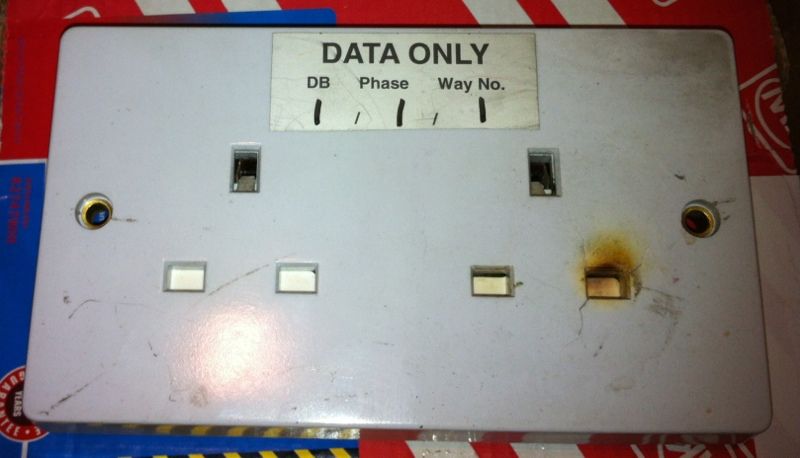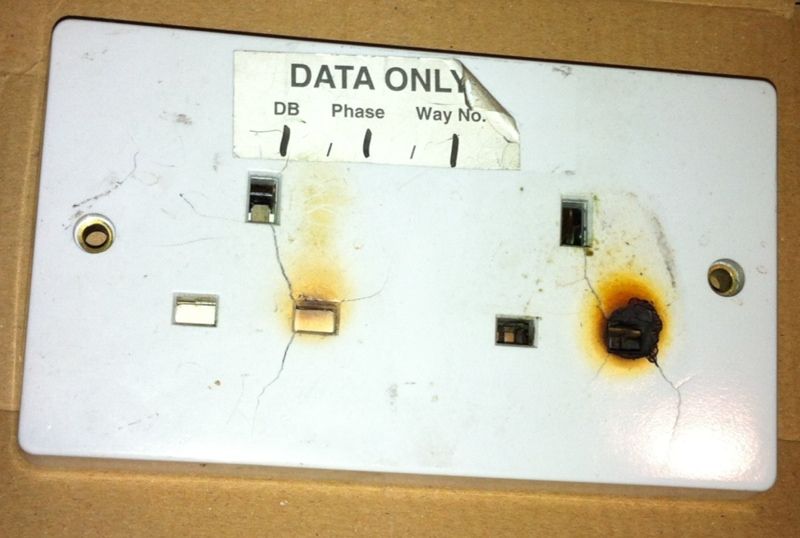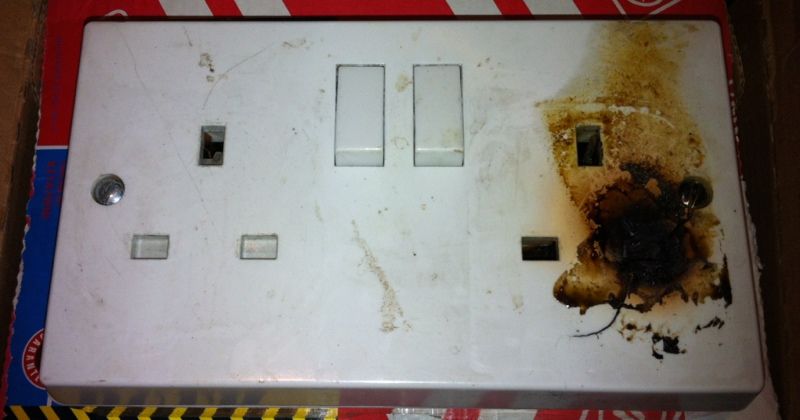I am not aware of anyone going. around telling people that a twin socket won't overheat at 26A.
I am.
It's you.
Every time you tell people that normal use is a 26A load you are telling them that the socket won't overheat under a load of 26A.
I am aware of someone telling people that manufacturers need not comply with the requirements of the standard, they just need to design their products to pass the tests, even though BS1363 requires all socket-outlets to be capable of meeting all the requirements and tests.
Well if you are then please take that up with them - don't try and introduce that argument into this thread where it has no place, because nobody here as said that manufacturers need not comply with the requirements of the standard.
It does not require a single socket to not overheat at 13A, it requires it to not overheat in normal use. And as you say, you don't know what normal use means.
It does not require a twin socket to not overheat at 26A, it requires it to not overheat in normal use. And as you say, you don't know what normal use means.
That does not make the requirement invalid.
Indeed not.
It makes it a requirement that the socket shall not overheat in normal use. That requirement is not that a single socket shall not overheat at 13A, nor is it that a twin socket shall not overheat at 26A.
It's a requirement that a socket shall not overheat in normal use. Not the same.
That's why I said "I think it is likely".
Maybe you do.
But your unauthoritative non-evidential opinion is worthless.
Correct, neither party knows for certain.
I'm glad you have at long last admitted that.
All that remains now is to get you to see that you must therefore stop claiming that normal use is a load of 26A.
However it is clear that members of the public are likely to use both outlets of a twin 13A socket-outlet to power loads of 3kW for some period, so such use could be expected during normal use.
I do not disagree with you there, and the discrepancy between what members of the public are likely to expect and what the standard requires is quite possibly a significant issue.
But I would remind you that a great many members of the public expect a black/blue at a light switch to be a neutral, and they expect to be able to replace a ceiling rose with something where all the blacks/blues are connected together and have it work OK.
Expecting something doesn't mean that they are right.
It is not a matter of having a different opinion to mine about what is 'normal use', but a matter of them choosing to ignore the requirements that relate to the ability of each and every 13A socket-outlet to carry 13A.
There you go again, and until you stop this topic will go on and on until it gets locked or I die, because I will never,
ever,
EVER let you get away with that lie.
There is no requirement for
each and every 13A socket to carry 13A without overheating
.
There just isn't.
It doesn't matter how many times you claim that there must be because there is a requirement for them to break a 13A current a number of times, or whatever, the fact will remain that the standard does not require a twin socket to carry 26A without overheating.
I can tell you the current, and have done so several times already.
No you cannot, and no you have not.
You have told us what you
think is the current required by the standard for a twin socket, but you have not told us what the standard says is
required.
Please stop making untrue claims.
I have also pointed out that the duration is not specified in BS1363.
Without a duration any claim that a socket can handle a certain current is as useful, and as true, as a claim that newspaper is water resistant.
So how can you know that people who don't build their sockets to the specification you think they should are cowboys, cheats and shysters? If they don't share your opinion of what normal use means (and you've said that you don't know that they do), then they are not cynically ignoring what the standard requires, they are doing what they think it requires.
If they cannot see that each 13A socket must be able to carry 13A, then they have no business selling such products.
If you can't see that a genuine difference of opinion about what is needed to comply with a requirement which is not defined does not make them cowboys, cheats and shysters then you have no business commenting on their probity.
If you cannot see that advising people that they can use their sockets in a way which could bring about their deaths because you think that your totally unsubstantiated opinion of what is required represents the truth then you have no business being a member of this forum.
They might be - perhaps because someone has told them, or their English is not good enough to understand the standard, or they might be deluded...
Or they might simply have a different opinion to you on what is meant by "normal use".
there is nothing dangerously irresponsible about pointing out the requirements of the standard.
There is very much something dangerously irresponsible about telling people that the requirements of the standard are something that you only
think they are when if you are wrong you could bring about their deaths due to failures of a socket when used in a way that you only
think they should be able to be used.
I cannot say the same for claiming that a twin 13A socket-outlet need not be capable of carrying 13A as long as it does not exceed certain temperatures at 14A + 6A under specified test conditions.
- If someone had claimed that it would not be dangerously irresponsible as it would not be a claim that a twin socket could carry more than it actually could. Telling people that a socket can carry less than it really can does not create any danger. Telling them that a socket can carry more than it really can does.
- Nobody has claimed that a twin 13A socket-outlet need not be capable of carrying 13A.
Well, I asked first! I have already told you what current a 13A socket shall carry. The time is not specified.
Without a duration any claim that a socket can handle a certain current is as useful, and as true, as a claim that newspaper is water resistant.
The current is specified, in several places. The duration is not.
Without a duration any claim that a socket can handle a certain current is as useful, and as true, as a claim that newspaper is water resistant.
I have said, many times, what the standard requires.
No - you have said many times what you
believe it requires.
Not once have you shown what it
actually requires.
If I had asserted that I know those things, you might be correct, but I have not asserted those things.
You have to know what duration is required. Without a duration any claim that a socket can handle a certain current is as useful, and as true, as a claim that newspaper is water resistant.
There might well be others. I have not conducted a survey. However, it is more impartial evidence than you have offered to support your opinion.
I have all the impartial evidence that is needed to support my opinion that BS 1363 does not define normal use - it's called the official standard published by the British Standards Institute.
With your opinion it does not matter if there are 1, 2, 3, or 3,000,000 people or companies who share it, until it becomes official it is worthless.
It doesn't matter that
if there ever was a process wherein all your opinions were taken into account and the weight of them was so overwhelming that the outcome of the process was a foregone conclusion,
until that process takes place all your opinions are just that, they are not official, and not one of the people holding that opinion has the right, or the authority, to declare that they are right and that anybody who has a different opinion is wrong.
Tell us what the meaning is then.
In doing so feel free to refer to formal definitions, and feel obliged to not rely in any way on opinions or interpretations or extrapolations of or inferences from what
is formally required.







